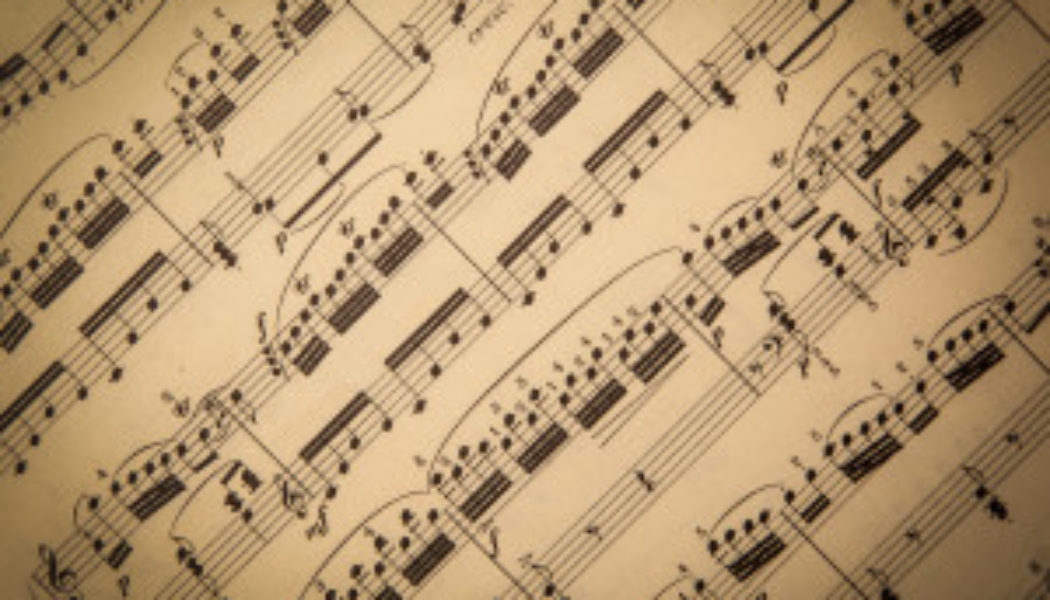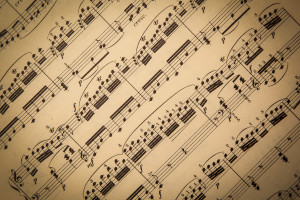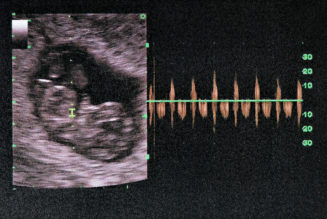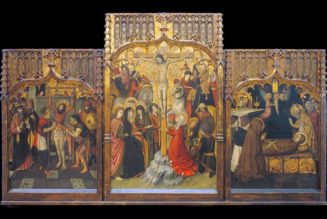Do you remember the meaning of the literary term onomatopoeia? In case you’ve forgotten, it’s a word that sounds like the object it describes. Words like oink, meow, wham, sizzle, and my personal favorite: yackety-yak are examples of onomatopoeia.
There are times when music, including sacred music, has an onomatopoetic quality; they sound like what their words are describing. For example, there are songs that describe the crucifixion featuring hammer blows in the background, and songs about the resurrection and ascension that feature notes soaring up the scale.
The best way to understand musical onomatopoeia is to listen to examples of it. So, consider the eight examples of sacred music I present below, which powerfully take up the very sound of what the words are describing.
N.B. The clips below are meant to be played by an embedded player. If your browser does not support such a player, clicking directly on the source hyperlinks to link directly to the MP3 files.
This first clip is from the vespers of Jean-Joseph Cassanéa de Mondonville, a French composer who lived in the 1700s. In his treatment of the text of Psalm 126 Nisi Dominus (unless the Lord build the house) comes the line sicut sagittae in manu potentiae ita filii (like arrows in the hand of the mighty, thus are his children). This is a psalm that praises the gift of children and goes on to declare, “Blessed is the man who has filled his quiver with them!” In this short clip, the text sicut sagittae (like arrows) thrillingly depicts the sound of arrows flying forth. The sound is created both by the strings and the voices. As you listen, marvel at the vocal discipline required of the choir to create this musical onomatopoeia.
Source: Mondonville Grands Motets, Purcell Choir, Orfeo Orchestra
Could you hear the arrows flying forth?
The second clip continues in a kind of battle-like mode. It is from the oratorio “Jepthe” by Giacomo Carissimi, who lived in the 1600s. It recalls the Old Testament story of Jepthe, one the Judges who ruled Israel prior to the monarchy. Jepthe is summoned to battle against the Ammonites and wins a great victory, only to fall into the grave sin of keeping an evil vow that leads to the death of his only daughter. The clip we will hear is from the battle scene in the oratorio. The Latin text is Fugite, fugite, cedite, cedite impii, corruite, et in furore galdii, dissipamini! (Flee, flee, yield, yield, impious ones, be scattered, in the furor of swords we strike you down!) You’ll hear pulsing sounds from the choir and strings, reminiscent of the sound of clashing swords and spears. The rushing sounds of the strings also paint a picture of a fleeing army. The sudden softening of the volume of the choir creates the image of an army that has fled and is now off in the distance.
Our third musical onomatopoeia is probably the best known of all the clips presented here. It is from Handel’s Messiah. The text says, “All we like sheep have gone astray.” Sure enough, the music sounds just like what the words describe as the choir creates a meandering sound. One can almost hear and see the sheep going astray.
And while we are considering animals, our fourth clip is a musical onomatopoeia that imitates the sound of a cock crowing. It is from the motet “Vigilate” by William Byrd. The text of the Motet is from Mark’s Gospel (13:35-37), in which the Lord Jesus, Vigilate, nescitis enim quando dominus domus veniat, sero, an media nocte, an gallicantu, an mane (Watch! For you know not when the lord of the house is coming, whether in the evening, at midnight, at the cock crow or morning). The excerpt is of the choir singing the words an gallicantu (at cock crow). Just see if the music sung doesn’t imitate the very sound of a cock crowing (cock-a-doodle-doo)! It begins in the men’s voices but becomes clearest in the treble voices at the end.
Source: The Tallis Scholars Sing William Byrd, Peter Phillips Dir.
The fifth clip depicts a common technique in Orchestral Masses. At the words crucifixus etiam pro nobis (and He was also crucified for us), the orchestra takes up the sound of hammer blows. The clip is from the Beethoven Mass in C. Listen especially to the deep bass and cello sounds and the hammer blows they bring to mind.
Source Beethoven Mass in C Robert Shaw; Atlanta Symphony Orchestra & Chorus
Our sixth clip moves us from war and suffering to love. It is Palestrina’s treatment of a text from the Song of Songs. The Latin text is Surge amica mea (Arise my beloved). As the word surge (arise) is sung by the various voices, the notes soar high through the scale. (The sopranos reach the highest notes, of course.)
Source: Palestrina: Missa Aeterna Christi Munera, James O’Donnell & Westminster Cathedral Choir.
The seventh clip is from a well-known motet by Thomas Luis Victoria, a Spanish priest, mystic, and composer of the 16th century. The Latin text is O Magnum Mysterium (O Great Mystery). The overall text develops the idea of the paradoxical mystery that animals would witness the birth of Christ and see him rest in their feed box (manger). In the opening bars, hollow fifths evoke the very mystery of which the text speaks. Victoria’s mystical prayer resonates through this wonderful piece.
Source: Missa O Magnum Mysterium. The Choir of Westminster.
Our eighth and final clip bring us to Jericho and another battle scene, this one thrillingly set forth in the arrangement of the African-American spiritual “The Battle Jericho” by Moses Hogan. We hear the percussive intensity of a battle during the siege of the walls and the likely use of arrows and swords. A soprano soloist takes up the sound of the trumpet that the Lord directed to be sounded. And then the choir imitates the sound of falling with their final word, “Down!”
Source: The Spirituals, Mormon Tabernacle Choir.
So, then, here is a brief tour of musical genius evident in the sacred music of the Christian tradition. Perhaps you know of other examples of musical onomatopoeia!
Join Our Telegram Group : Salvation & Prosperity







